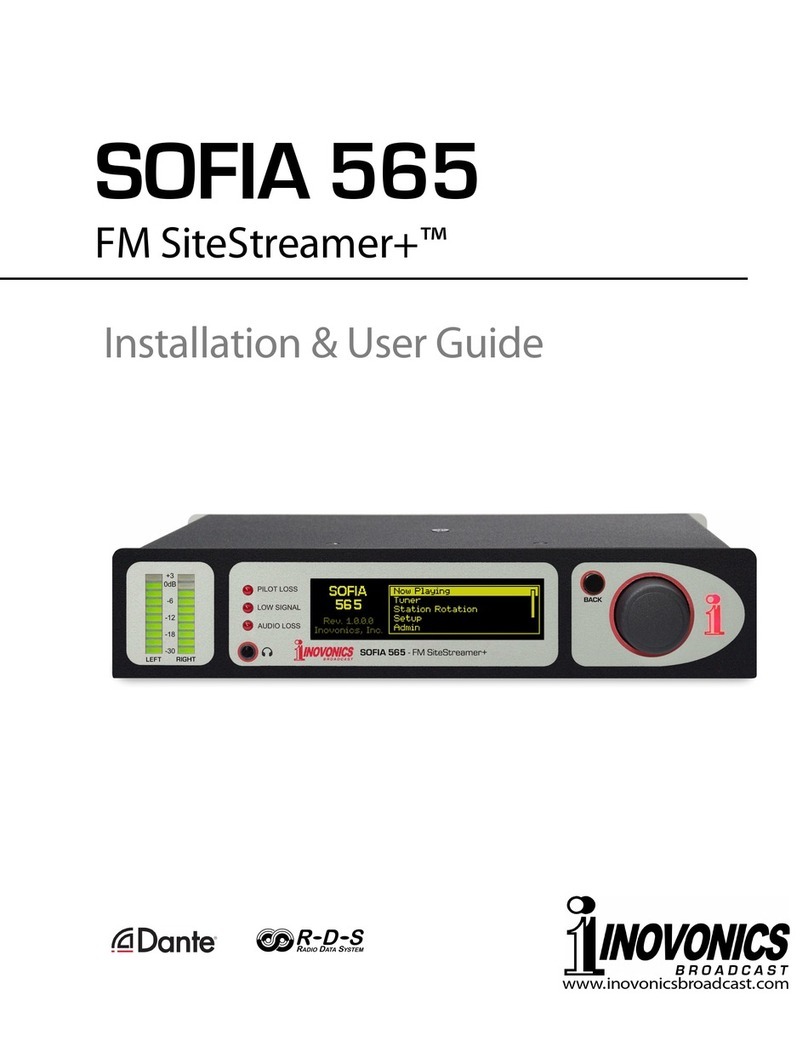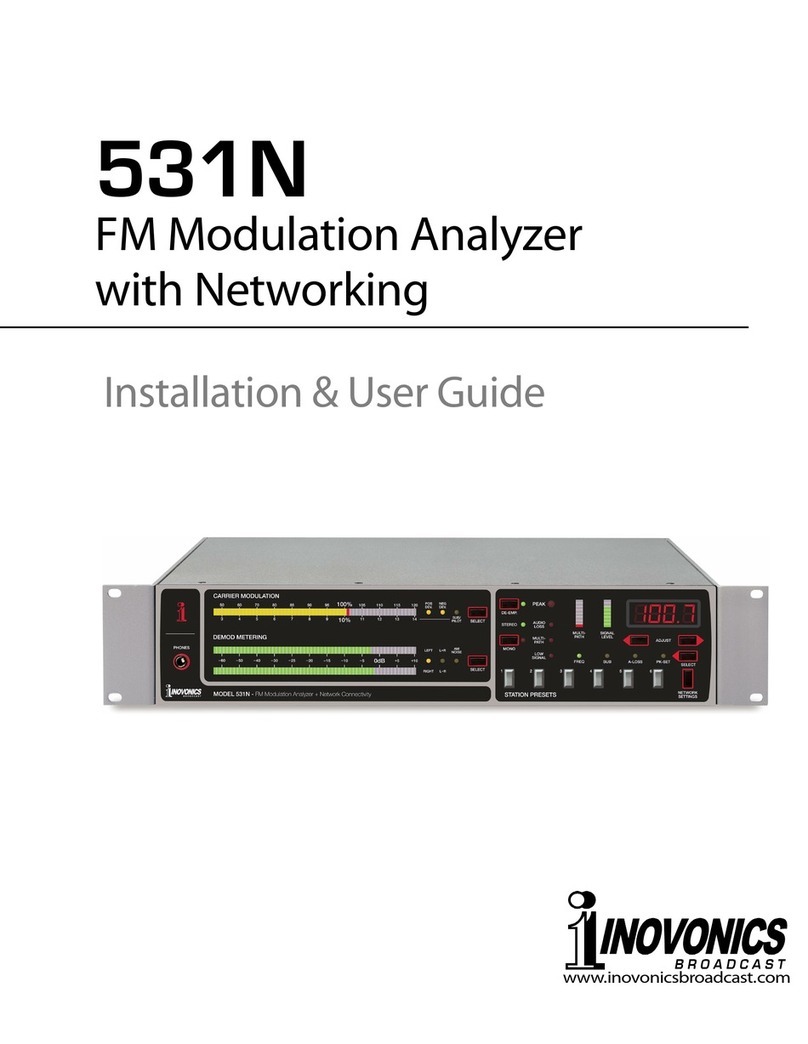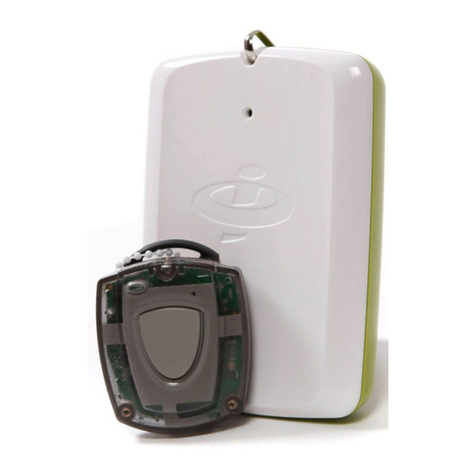
11.28.16 04590H © Inovonics, 2016 - www.inovonics.com 2
10. Click “Add” on the “Registered Meters” page; confirm selected building.
11. Complete the “Add New Meter To...” form when it appears.
12. Click the “Register” button.
13. When prompted, press the reset button on the transmitter; wait for
confirmation.
3 Replace the Battery (EN1501 Only)
When the low battery message is received, you will need to replace the
EN1501 battery.
1. Open the housing by pressing down on the base tab near the wiring
through-hole while lifting away the cover.
2. Remove the old battery, taking note of the battery orientation.
3. Insert the new battery, making sure it is aligned correctly.
4. Press the reset button.
Note: EN1501 transmitters retain programming data in non-volatile
memory. They do not require reprogramming after loss of power. Install
new battery and press the transmitter reset button to initialize the
transmitter and restore programming. Its count will go to zero and the initial
Meter Read count will be updated in the DCC.
4 Specifications
Dimensions: 3.57" x 1.70" x 0.85"
Operating environment: -20°- 60°C (-4°- 140°F), 90% relative humidity,
non-condensing
Typical battery life: EN1501: 5 years at 70 to 90°F (20 to 30°C). Higher
temperatures reduce battery life. EN1501-XL: calculated battery life of 20
years at 70 to 90°F (20 to 30°C). Higher temperatures reduce battery life.
EN1501 Battery (BAT604): 3.0V lithium (DL123A) The battery is always
supervised.
5 Television and Radio Interference
This equipment has been tested and found to comply with the limits for a
Class B digital device, pursuant to Part 15 of the FCC Rules. These limits
are designed to provide reasonable protection against harmful interference
in a residential installation. This equipment generates, uses and can
radiate radio frequency energy and, if not installed and used in accordance
with the instructions, may cause harmful interference to radio
communications. However, there is no guarantee that interference will not
occur in a particular installation. If this equipment does cause harmful
interference to radio or television reception, which can be determined by
turning the equipment off and on, the user is encouraged to try to correct
the interference by one or more of the following measures:
• Reorient or relocate the receiving antenna.
• Increase the separation between the equipment and receiver.
• Connect the equipment into an outlet on a circuit different from that to
which the receiver is connected.
• Consult the dealer or an experienced radio/TV technician for help.
6 FCC Part 15 and Industry Canada Compliance
This device complies with part 15 of the FCC Rules and Industry Canada
license-exempt RSS standard(s). Operation is subject to the following two
conditions: (1) this device may not cause interference, and (2) this device
must accept any interference, including interference that may cause
undesired operation of the device.
Le présent appareil est conforme aux CNR d'Industrie Canada applicables
aux appareils radio exempts de licence. L'exploitation est autorisée aux
deux conditions suivantes : (1) l'appareil ne doit pas produire de brouillage,
et (2) l'utilisateur de l'appareil doit accepter tout brouillage radioélectrique
subi, même si le brouillage est susceptible d'en compromettre le
fonctionnement.
Caution: Changes or modifications not expressly approved by the party
responsible for compliance could void the user's authority to operate the
equipment.
7 US Patent Numbers
• 7,154,866.
• 7,554,932.
• 7,746,804.
• Other patents pending.






















